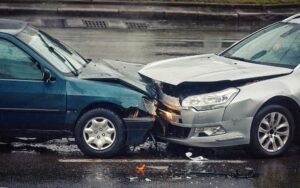
Navigating insurance claims after a car accident in Michigan can be tricky due to no-fault laws. Determining liability and securing fair compensation often requires experienced legal help. When shared responsibility exists, documenting evidence, identifying liable parties, disputing unreasonable determinations, and demonstrating losses caused by others is essential, yet challenging.
Although no attorney can undo the accident, a Michigan car accident lawyer can help maximize recovery within Michigan’s modified tort system. Our personal injury, handling negotiations, and intricacies. Knowing your options and rights is vital.
Understanding Michigan’s No-Fault Insurance Law
Michigan’s unique no-fault auto insurance system is different from most states. Understanding how fault and claims work here is key for drivers. Knowing the basics helps make wise choices when accidents happen.
Michigan law requires drivers to carry personal injury protection (PIP) coverage, which covers medical costs and lost wages regardless of fault. PIP payouts derive from your insurer, not the at-fault driver’s. This allows easier compensation for treatment and losses after accidents.
If thresholds are met, Michigan retaining modified tort options allows suing at-fault drivers for further damages like pain and suffering. However, securing additional compensation remains complex under no-fault parameters. An attorney’s guidance is important for maximizing claims.
Your Fight Is Our Fight
What does “Partial Fault” Mean?
In multi-party accidents, fault can be divided based on contribution. This is unlike assigning sole blame to one driver. Understanding fault allocation is beneficial after crashes in Michigan.
If crash investigators or insurers determine you hold some accountability for an accident alongside others, you are “partially at fault.” Your actions or failures to act contributed to the collision. Fault percentages reflect weighted blame distribution between all negligent drivers.
Michigan uses “modified comparative negligence” for damage recovery. If your partial fault stays under 50%, you may still seek compensation by having awards reduced by your percentage. However, if deemed 50%+ responsible, you cannot recover losses from other parties.
Determining Fault in a Car Accident
Determining fault ratios in Michigan crashes entails inquiries by police and insurers using negligence standards. Contested liability may end up before a court. Judges can make final calls on disputed responsibility.
Initially, police analyze evidence like skid marks, vehicle damage, witness accounts, and driving records to complete crash reports with preliminary fault findings. Insurers also review claim details and may perform additional probes before assigning final fault ratios. Fault disputes trigger legal proceedings.
Michigan utilizes negligence concepts like failure to yield, improper lane changes, disregard of traffic signs, distracted driving, and intoxication to determine if drivers acted reasonably. Comparative fault ratios derive from applying negligence facts. Attorneys help maximize recovery odds when fault splits between multiple motorists.
We know how to get our clients the results they need in the toughest legal arenas.
How Partial Fault Affects Compensation
Having a partial fault in a Michigan crash lowers, but does not erase, payout eligibility from other at-fault drivers. Compensation corresponds to set liability percentages. The less fault, the greater the potential recovery.
With comparative negligence, under 50% fault still allows recovery from other liable parties. Your damages decrease by your set percentage. For instance, 20% liability reduces payouts by that same ratio.
However, those deemed 50% or more at fault are barred from compensation in Michigan. In such scenarios, your insurer remains responsible for personal injury protection payouts, but you cannot claim additional compensation from other negligent motorists. An attorney can help maximize outcomes within no-fault parameters when a partial fault exists.
You will always work directly with your attorney throughout your case.
Common Scenarios of Partial Fault Accidents
Each collision carries unique circumstances. Several frequent multi-party fault scenarios help illustrate partial liability in practice. Understanding common examples can help provide clarity.
A classic example involves a driver negligently changing lanes and side-swiping a passing car. This causes the struck vehicle to veer out of control and strike a median. Here, the lane-changer holds primary but not sole fault for all resulting damage.
Another scenario is a multi-vehicle rear-end chain reaction. Driver A strikes Driver B from behind, propelling them into Driver C, and so on. All motorists maintaining unsafe following distances share graduated levels of liability.
Documenting Evidence for Your Claim
With a shared fault, thorough evidence bolsters claims against other at-fault drivers. Photos, statements, reports, and records help validate losses due to others. Proper documentation proves what portion of harm warrants compensation.
Thoroughly get photos of the accident scene, capturing property damage, tire marks, debris, weather and road conditions, and other relevant factors from all angles. Try to get witness names and contact information while fresh. Save police reports, medical invoices, auto repair bills, and other documentation for further proof.
Additionally, note details like traffic controls and speed limit signs present, lighting conditions, and any obstruction to visibility or caution signs disregarded. An attorney can help assemble a convincing evidence portfolio demonstrating losses you endured because of the actions of other motorists involved. Strong proof like this helps to increase potential compensation.
Benefits of a Lawyer in a Partial Fault Claim
An expert personal injury lawyer helps navigate the intricacies of divided fault claims within Michigan’s intricate no-fault laws. Legal representation provides key benefits. Their guidance can optimize claim outcomes after shared-blame crashes.
Lawyers help determine viable defendants, identify all insurers involved, demonstrate negligence sufficiently, negotiate fair settlements, and argue recovery entitlements. Attorneys can also push back on insurer-assessed fault ratios. They do this by highlighting contradictory evidence when the percentages assigned prove unreasonable.
Your attorney can help prove client damages attributable to other parties through documentation, pinpointing economic and non-economic losses warranting compensation. Lawyers also demand policy maximum payouts, yielding optimal client recoveries. Without a lawyer on your side, you can risk disappointing results for your case.
You do Not Have to Go Through the Process Alone
Even if you hold some liability, recovering rightful damages from additional negligent parties provides important compensation for losses. However, Michigan’s complex auto insurance laws make navigating the process confusing and challenging. Working with a personal injury lawyer can help determine the next step.
An attorney understands no-fault policies, comparative negligence, viable targets, documentation requirements, and every step needed to build a convincing partial-fault claim. Although you cannot change what happened, having legal representation from the start gives you the greatest chance for the best outcome. Contact us for a free consultation.
We’re Experienced. We Care.
We Exceed Client Expectations.


